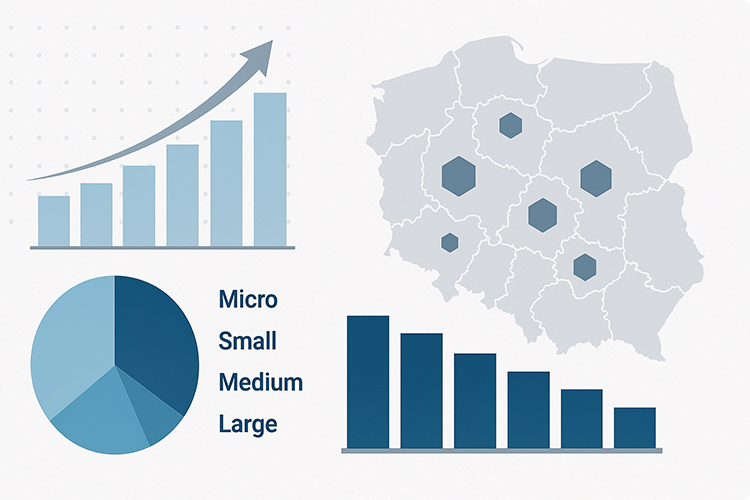2025-09-08
indicators

The number of active enterprises in Poland reached 2.85 million in the second quarter of 2025, up 4.4% year-on-year, according to data released by Statistics Poland (GUS). Micro-enterprises, employing up to nine people, continued to dominate the business landscape, accounting for 95.8% of all active firms. Their number rose by 4.6% compared to the same period in 2024. In contrast, the number of small firms (10–49 employees) fell by 0.2% and medium-sized firms (50–249 employees) by 0.8%. Large enterprises, with more than 250 employees, remained stable, with a marginal increase of three entities. By sector, the largest share of enterprises operated in trade and repair of motor vehicles (17.4%), followed by construction (15.2%) and professional, scientific and technical activities (13.7%). The smallest proportions were found in mining and quarrying (0.1%) and energy supply (0.3%). Year-on-year, the biggest increases were recorded in administrative and support services (+13.9%), education (+9.6%), and other service activities (+7.6%). The Mazowieckie voivodship, which includes Warsaw, remained the country’s business hub, hosting 20% of all active enterprises. Other major concentrations were in Wielkopolskie (10.3%), Śląskie (10.3%), and Małopolskie (10.0%). The smallest share was in Opolskie (1.9%). The strongest regional growth was observed in Małopolskie (+5.5%), Mazowieckie (+5.4%), and Pomorskie (+5.1%). At the local level, the highest number of enterprises was registered in Poznański powiat (47,008), followed by Piaseczyński (26,855) and Krakowski (25,291). By contrast, only around 1,000 enterprises were active in the smallest counties, such as Gołdapski, Węgorzewski, and Sejneński. When measured against population, Mazowieckie again led with 103.5 active enterprises per 1,000 residents, followed by Wielkopolskie (84.4), Pomorskie (84.1), Małopolskie (83.0), and Dolnośląskie (81.2). The lowest density was recorded in Podkarpackie (56.6). Statistics Poland emphasized that microbusinesses remain the backbone of the Polish economy, while growth in education and administrative services highlights diversification beyond traditional trade and construction sectors.

